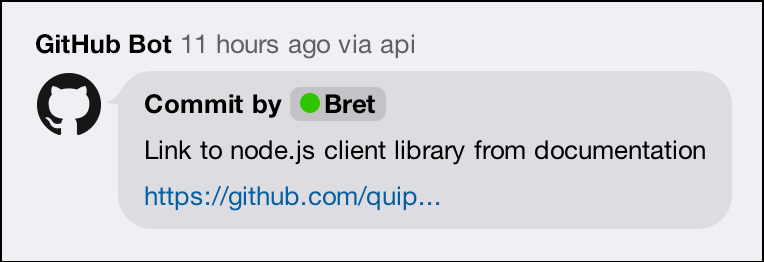Introducing the Quip API
Today, we are excited to announce the availability of the Quip API. The Quip API provides full read-write access to your Quip documents and messages via a REST API.
For those of you who write code, you can start using the API today. To get started, read the Quip API Reference documentation and download our official client libraries (Python and node.js).
The Quip API enables you to:
- Export, create, and edit documents
- Post messages
- Create, modify, and share folders
- Add and remove people from shared documents
Our goal is to enable robust import and export capabilities for your Quip documents as well as enabling your company to integrate with other services. To make it easier for you to get started, we've implemented sample apps for many of the use cases our customers have been asking for.
Use Cases
Import & Export
The API has easy methods for downloading and uploading documents as HTML so you can write custom document importers and exporters. Check out the WordPress publishing sample to get started.

Custom Notifications
The API enables you to post messages and add items to task lists automatically. For inspiration, check out our Webhooks sample, which automatically posts messages to Quip on GitHub, Crashlytics, and PagerDuty activity.

Account Automation
With the API, you can add people to documents or add people to shared folders with a script to automate many IT operations for new employees.
Hello, World
You can create a Quip document with a single call to curl. First, download your Personal Access Token. Then run this command to create your first document via the API:
curl https://platform.quip.com/1/threads/new-document \
-d "content=<h1>Hello+Quip+API</h1><p>First+paragraph</p>" \
-H "Authorization: Bearer {PERSONAL_ACCESS_TOKEN}"
Who Can Use the API?
Anyone can access the API for personal use. Simply generate a Personal Access Token, and you can access your own Quip account via the API.
Quip Enterprise customers can access the full API and enable OAuth authentication for the entire company. If you are interested in using the API at your company, contact us.
